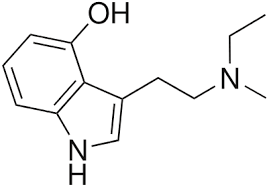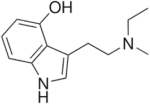What is 4-HO-MET Fumarate?
4-HO-MeT (4-hydroxy-N-methyl-N-ethyltryptamine) is a synthetic compound belonging to the family of tryptamine compounds. It is a psychedelic substance with similar effects to other tryptamines such as psilocin. As a psychedelic, 4-HO-MeT works by binding to serotonin receptors in the brain, specifically the 5-HT2A receptor, leading to altered states of consciousness, perception and mood.
The origins of 4-HO-MeT are not well documented, but it is believed that it was first synthesized in the 1960s by Alexander Shulgin, a chemist and pharmacologist known for his work on psychedelic substances. Shulgin described the compound as having a similar chemical structure to psilocin, but with its own unique effects and characteristics.
How did 4-HO-MET Fumarate come about?
The origins of this product date back to the 1960s, when Alexander Shulgin, a chemist and pharmacologist, began experimenting with various psychedelic substances. Shulgin was interested in discovering new compounds that could induce altered states of consciousness, and he spent much of his career synthesizing and testing various substances for their psychedelic effects.
It is believed that Shulgin first synthesized 4-HO-MeT during this period, likely as a derivative of psilocin, the active ingredient in magic mushrooms. Shulgin described the compound as having a similar chemical structure to psilocin, but with its own unique effects and characteristics.
After the initial synthesis, 4-HO-MeT was likely studied by Shulgin and other researchers for its psychoactive effects. However, it did not receive widespread attention until the rise of the research chemicals market in the early 2000s.
Today, 4-HO-MeT is primarily used as a research chemical and is not intended for human consumption. It is often used in studies of the effects of psychedelic substances on the brain and for the development of potential therapeutic applications.
Shulgin’s synthesis of 4 HO MeT is an important contribution to psychedelic research. His work in synthesizing and testing new compounds helped expand our understanding of the human mind and consciousness, paving the way for new discoveries in the field of psychedelic science.























Reviews
There are no reviews yet.